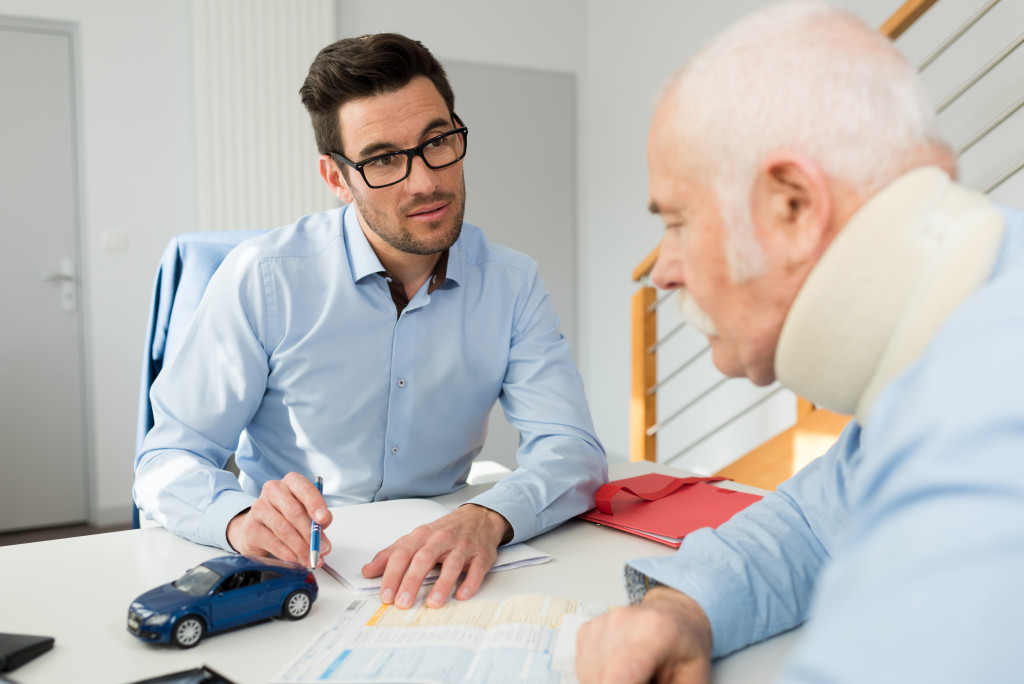- Document everything related to the incident, such as photos, videos, the contact information of witnesses, and medical reports.
- Gather witness testimony to help prove liability against the other party.
- Obtain an accident report from law enforcement if one exists.
- Collect evidence such as medical bills and records that demonstrate your injuries.
- Seek legal advice to understand your rights and build a strong case.
When proving liability in a personal injury case, you want to ensure that all your bases are covered. Liability is one of the essential elements of any personal injury case and can be challenging to establish. Fortunately, there are steps you can take to help ensure that your claim will succeed. Here are five tips for proving liability in a personal injury case:
1. Document Everything
One of the most important things you can do to prove liability in a personal injury case is to document everything. This includes taking photos and videos at the scene of the accident, writing down details such as time, location, and other people present, and getting contact information from anyone else involved or who witnessed the incident. You should also get medical attention as soon as possible and document any injuries or damages you may experience.
2. Gather Witnesses
If there were other people present at the time of your accident, it’s essential to get their contact information and testimony. When you file a personal injury claim, these witnesses can be invaluable in helping establish liability against the other party. Furthermore, they are a valuable source of evidence since they can provide firsthand accounts of what occurred during the accident.
3. Obtain Accident Reports

In some cases, accidents will involve law enforcement officers who will write an accident report detailing the incident’s details. These reports can be incredibly helpful in establishing liability because it provides an unbiased account of what happened. If you are injured, and the other party is found to be at fault, the accident report will serve as a legal document that states this fact.
4. Collect Evidence
When it comes to proving liability in a personal injury case, evidence is key. This includes medical bills and records that prove your injuries; photos or videos taken at the time of the incident; any correspondence between yourself and the other party relating to the event; and any reports or statements from witnesses who were present during the accident. Having tangible proof of what occurred will make it easier for you to build your argument when filing a claim.
5. Seek Legal Advice
Finally, seeking legal advice is important if you are considering filing a personal injury claim. An experienced attorney can help you understand your rights, as well as assist you in gathering the necessary evidence and documents to prove liability. This is especially true if the other party denies responsibility for the accident or blames you for any damages incurred. A knowledgeable lawyer can make all the difference in getting a successful outcome. A personal injury lawyer can also help you understand any legal terms or procedures involved in filing a claim and advise you on the best action to take.
FAQs
What Happens If I Can’t Prove Negligence?

If you can’t prove that the defendant was negligent, then you may not be able to recover any compensation for your injuries and losses. To have a successful personal injury claim, you must demonstrate that the defendant was careless or reckless in their actions or omissions and that this negligence caused your injuries. Without such proof, a court likely won’t find it in your favor.
Who Is Responsible For Paying My Damages?
The person deemed responsible for causing your injury is liable for paying damages related to your medical bills, lost wages, pain, suffering, etc. Depending on the circumstances of your case, you may be able to seek compensation from multiple parties.
How Do I Get Started On A Personal Injury Claim?
To start, you should provide your lawyer with as much information as possible about the injury. This includes any photos of the accident scene, medical reports, information about the property damage, and any contact information of possible witnesses. Your lawyer will review this with you to determine if a personal injury claim is appropriate for your situation.
Is There A Statute Of Limitations On Personal Injury Claims?
Yes, each state has its laws regarding when you must file a personal injury claim. Generally, filing your claim immediately after sustaining an injury is best. Depending on the state, this deadline can range from one year to six years from the date of the incident or injury. Therefore, if you plan to pursue legal action for your injuries, it is essential to consult with an attorney immediately so that you will not miss any critical filing deadlines.
In Summary
When proving liability in a personal injury case, having the right information and resources on your side makes all the difference. These simple steps can ensure that your argument is strong and help ensure justice is served. With these tips in mind, you can be confident that your claim will be successful.






